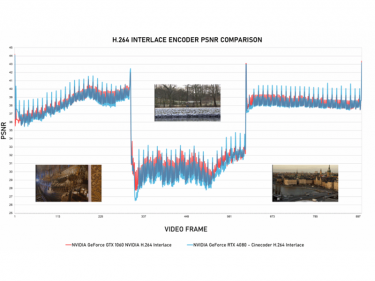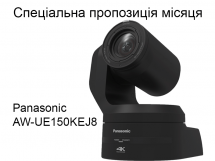| Українська | English | |||||||||||
|
|||||||||||
| News | About company | Service-centre | OB Van/SNG Rental | NextGen Energy Solutions | Contact us |
|
|
Engineering Service, Inc.
» News News Cinegy announces the release of a new version of its Cinecoder video codec SDK, solving a fundamental problem for TV and broadcast industries.
The H.264 interlace video format is globally used for 1080i HDTV transmission via over-the-air, satellite, cable or streaming service providers. The majority of HD broadcasts still use this format even if the adoption of newer codecs and progressive formats is increasing. For years, software developers and solutions vendors have been using NVIDIA GPUs H.264 encoding capabilities, which became a cornerstone of many solutions for the media industry. With the introduction of the Turing series of GPUs, NVIDIA ended H.264 interlace support. While this initially caused issues, the availability of the previous Pascal generation of NVIDIA cards made it manageable. However, Pascal-based hardware availability has now ended, and these cards no longer receive NVIDIA driver updates, significantly impacting many broadcast workflows. Cinegy's latest Cinecoder SDK version 4.22 addresses this challenge by enabling interlace H.264 encoding using Turing, Ampere, and Ada Lovelace (current) generation NVIDIA GPU cards. This breakthrough benefits the broadcast and media & entertainment industries, which still deliver most of their content in this format. Current generation NVIDIA cards now offer higher performance, increased encoding throughput and improved energy efficiency, while newer cloud instances provide better value for money with up-to-date NVIDIA drivers. Benchmarks using standard test clips show that the Cinecoder interlace H.264 encoder for NVIDIA GPUs creates the same or better-quality output than the original NVIDIA Pascal series hardware encoder. The encode performance on Ada Lovelace based NVIDIA GPUs, the current NVIDIA generation, is around 500 FPS for H.264 1080i per NVENC encoder unit, which means that cards with two NVENC units, such as the RTX 4070 Ti, RTX 4070 Ti Super, RTX 4080 and RTX 4090 (or their professional counterparts like the RTX 4000 ADA and up) can encode around 1000 FPS. Translating this into 1080i50 or 1080i59.94 stream numbers this would theoretically result in 20 respectively 16 streams for a single NVENC or 40 respectively 32 streams when using a GPU with two NVENCs. Theoretically, as a) there are usually other system overheads that reduce the number and b) NVIDIA consumer cards have a hard limit number of enabled output streams, that makes a second NVENC unit useless, at least when encoding only HD streams. Now broadcasters and media professionals have once again freedom of choice to pick any of the current or recent NVIDIA GPUs to use in their broadcast encoding workflows. Cinegy's Cinecoder SDK can be licensed specifically for enabling NVIDIA GPU H.264 interlace encoding or for all additional encoding, decoding and media handling features. It is also home to Cinegy's proprietary Daniel2 codec, the world's fastest video codec designed to run natively on GPUs – with over 10,000 FPS 4K encode and 30,000 FPS 4K decode capabilities.
« To the list of news |
|
|||||||||||||||||
 |
+38 (044) 593-18-20 +38 (073) 593-18-20 +38 (096) 532-96-82 +38 (095) 532-96-82 Service center Telegram @Engineer_Service |

|
|
|||||
 |
e-mail: engineer-service.tv 15 Vavylovykh str., Kiev, 04060, Ukraine Authorized service centre of Panasonic, Sony, JVC, Fujinon, Canon |
|||||||







